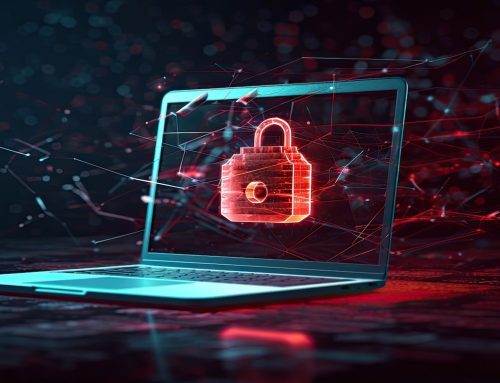As we progress through 2024, the cybersecurity landscape is evolving rapidly, with new threats emerging and old ones becoming more sophisticated. Cybercriminals are continuously innovating, and organizations and individuals alike must stay vigilant. Here are the Top 10 Cybersecurity Threats you should be aware of in 2024, along with vulnerabilities and strategies to mitigate them.
1. AI-Powered Phishing Attacks
 Threat:
Threat:
Phishing has always been a prominent attack vector, but in 2024, cybercriminals are leveraging AI to craft hyper-realistic phishing emails that are harder to detect. AI can study an organization’s internal communications, mimic writing styles, and create phishing messages that appear legitimate.
Vulnerability:
The human factor remains the primary weakness. Employees are often the targets, as they can be easily deceived by convincing, AI-generated phishing emails.
Mitigation:
- Security Awareness Training: Continuous phishing simulations and training help employees recognize phishing attempts.
- Advanced Email Filtering: Use AI-based email filters that can detect subtle patterns of phishing attempts.
- Multi-Factor Authentication (MFA): Implement MFA to prevent unauthorized access, even if credentials are compromised.
2. Deepfake Cyber Attacks
 Threat:
Threat:
Deepfake technology is improving rapidly, allowing attackers to create fake audio and video that appear real. In 2024, we see deepfakes being used for fraud, impersonation, and disinformation campaigns.
Vulnerability:
Trust in digital media and communications is being exploited. Businesses could be tricked into financial scams where deepfakes of CEOs or executives issue fraudulent directives.
Mitigation:
- Deepfake Detection Tools: Use AI-based solutions that can analyze audio and video files to identify manipulation.
- Verification Protocols: Always verify sensitive communications through secondary channels like phone calls or secure messaging apps.
- Employee Awareness: Train employees to be skeptical of video and audio communications that seem out of character.
3. Ransomware 3.0
 Threat:
Threat:
Ransomware continues to evolve, with attackers now not only encrypting data but also threatening to release sensitive data if their demands aren’t met. This form of double extortion is growing, with attackers increasing pressure on victims by exposing breaches publicly.
Vulnerability:
Poorly secured networks, inadequate data backups, and a lack of encryption make organizations vulnerable to ransomware attacks.
Mitigation:
- Regular Backups: Maintain up-to-date offline backups of critical data.
- Endpoint Detection & Response (EDR): Use EDR tools to monitor and detect abnormal activities.
- Network Segmentation: Segment your network to prevent the lateral spread of ransomware once it penetrates one part of the system.
4. Supply Chain Attacks
Threat:
Attackers target weak links in the supply chain to infiltrate larger organizations. They exploit vulnerabilities in third-party software, hardware, or service providers to gain access to secure networks.
Vulnerability:
Third-party vendors often don’t adhere to the same security standards, and businesses might not have visibility into their partners’ security practices.
Mitigation:
- Vendor Risk Management: Regularly assess and monitor the security posture of all third-party vendors.
- Zero Trust Architecture: Implement zero trust principles where no entity, inside or outside the network, is trusted by default.
- Contractual Security Clauses: Ensure that contracts with third parties include stringent security requirements and liability clauses.
5. Cloud Misconfigurations
Threat:
With the rapid adoption of cloud services, improper configuration of cloud resources remains a significant threat. Misconfigurations can expose sensitive data, making it easily accessible to attackers.
Vulnerability:
Default security settings, improper access control, and insufficient monitoring often leave cloud environments vulnerable to exploitation.
Mitigation:
- Continuous Monitoring: Use cloud security posture management (CSPM) tools to continuously audit configurations.
- Least Privilege Principle: Ensure that users only have access to the cloud resources necessary for their role.
- Regular Audits: Conduct regular security audits of cloud environments to ensure compliance with security policies.
6. IoT-Based Attacks
Threat:
The proliferation of Internet of Things (IoT) devices in industries, homes, and public spaces creates numerous entry points for cybercriminals. Many IoT devices lack sufficient security features, making them prime targets for exploitation.
Vulnerability:
Weak or default passwords, outdated firmware, and limited security capabilities make IoT devices vulnerable to attacks, especially DDoS and botnet attacks.
Mitigation:
- Strong Authentication: Use strong, unique passwords for IoT devices and enable two-factor authentication where possible.
- Firmware Updates: Regularly update firmware to patch known vulnerabilities.
- Network Isolation: Isolate IoT devices on a separate network to limit exposure in case of compromise.
7. Insider Threats
Threat:
In 2024, insider threats are becoming more sophisticated, with employees, contractors, or partners intentionally or unintentionally causing harm. Whether driven by financial gain, disgruntlement, or carelessness, insider threats can be harder to detect than external attacks.
Vulnerability:
Organizations with weak monitoring, excessive permissions, or poor employee oversight are particularly vulnerable to insider threats.
Mitigation:
- User Behavior Analytics (UBA): Use AI-powered tools to monitor employee behavior and detect anomalies.
- Least Privilege Access: Limit employees’ access to only the resources they need to perform their jobs.
- Whistleblower Programs: Create internal reporting mechanisms to detect potential insider threats before they escalate.
8. Quantum Computing Threats
Threat:
Quantum computing, while still in its early stages, has the potential to break traditional cryptographic algorithms. In 2024, this threat is not yet fully realized but is a growing concern for future-proofing data security.
Vulnerability:
Any system relying on traditional encryption methods (such as RSA and ECC) is vulnerable to being compromised once quantum computers become capable of breaking these algorithms.
Mitigation:
- Post-Quantum Cryptography: Start exploring quantum-resistant encryption algorithms.
- Data Prioritization: Protect the most sensitive and long-term data with the highest encryption standards.
- Stay Informed: Keep abreast of developments in quantum computing and cryptography to prepare for upcoming challenges.
9. API Security Vulnerabilities
Threat:
As more applications rely on APIs to communicate with each other, APIs become an attractive target for attackers. Insecure APIs can lead to data breaches, denial of service, or unauthorized access.
Vulnerability:
Unsecured APIs, weak authentication mechanisms, and improper rate limiting can expose APIs to exploitation.
Mitigation:
- API Gateway Security: Use an API gateway to enforce authentication, rate limiting, and traffic monitoring.
- Input Validation: Ensure that all inputs to the API are properly validated to prevent injection attacks.
- Access Control: Implement strict access control policies for APIs to limit who can access specific endpoints.
10. Zero-Day Exploits
Threat:
Zero-day exploits are vulnerabilities that are unknown to software vendors and are actively exploited by attackers before a patch is available. In 2024, attackers are becoming more adept at discovering and weaponizing these vulnerabilities.
Vulnerability:
Software that is not frequently updated or monitored is at high risk of zero-day exploits, leaving organizations exposed until patches are released.
Mitigation:
- Patch Management: Ensure that software and systems are regularly updated with the latest security patches.
- Threat Intelligence: Use threat intelligence services to stay informed about potential zero-day vulnerabilities in your software stack.
- Endpoint Protection: Deploy advanced endpoint protection solutions that can detect and block exploit attempts, even for unknown vulnerabilities.
2024 presents new challenges in cybersecurity as attackers become more innovative and sophisticated. Organizations can significantly reduce their risk by understanding the top threats and implementing robust mitigation strategies. Whether it’s using advanced security tools, continuously training employees, or adopting new technologies like post-quantum cryptography, staying one step ahead of attackers is key to securing your digital future.
Stay vigilant, and always be proactive in your approach to cybersecurity.





